21 Sewing Supplies Names and Pictures For Easy Sewing
You may be new to sewing and unsure of what supplies you need. Before you buy a ton of sewing supplies you may not need, take a look at our top 21 supplies along with the sewing supplies names and photos.
The Importance of Sewing Supplies
Sewing supplies play a crucial role in achieving professional results and ensuring a smooth sewing experience.
Without the right tools at hand, even the most skilled seamstress can struggle to complete a project efficiently.
By understanding the different types of sewing supplies available and their specific uses, you can equip yourself with the necessary tools to take your sewing skills to new heights.
A Brief History of Sewing
Before delving into the realm of sewing supplies, let’s take a quick journey into the origins of sewing itself. Sewing has been an integral part of human history for thousands of years.
From the earliest form of needlework using animal bones and plant fibers to the modern sewing machines we use today, sewing has evolved and adapted to meet the needs of various cultures and time periods.
Essential Sewing Supplies Names and photos
Sewing Machine
The sewing machine is the heart of any sewing room. It automates the stitching process, saving time and effort while producing consistent and precise results.
From basic mechanical models to advanced computerized machines, there is a wide range of options available to suit different sewing needs and skill levels. You can find 9 great options for beginners here. They are perfect for your first sewing machine.
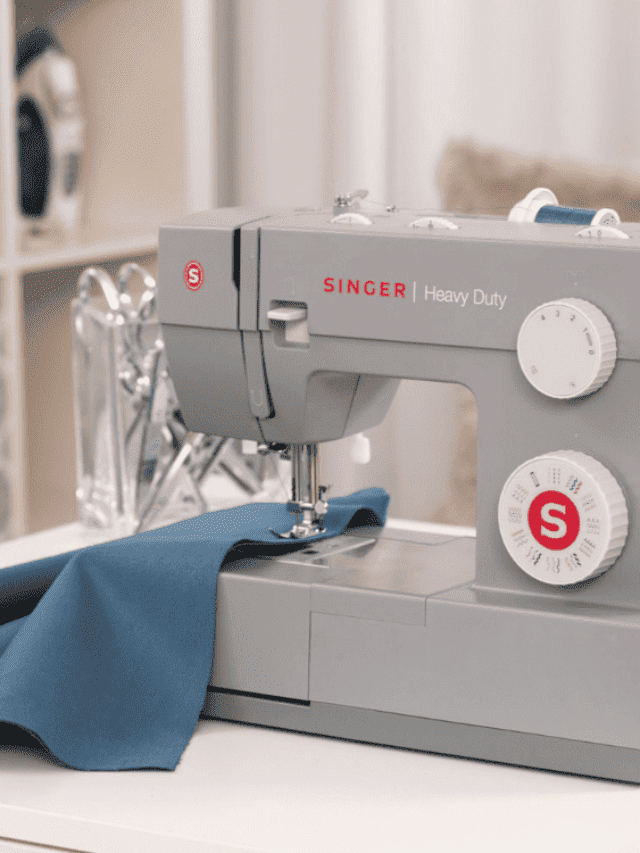
Scissors and Cutting Tools
Good quality scissors are a staple in every seamstress’s toolkit. Sharp fabric scissors, pinking shears for finishing edges, and thread snips (small scissors) for quick trims are essential for clean and accurate cutting.
Additionally, a rotary cutter and cutting mat provide an alternative method for cutting fabric, especially when working with intricate patterns or multiple layers.
You do want to use your fabric scissors only for fabric and not for cutting paper patterns. The best way to ensure your pair of scissors aren’t used on paper is to tie a ribbon around the handle.
This helps them keep their sharp point. Scissors are an essential tool for your sewing journey.

Measuring Tools
Accurate measurements are crucial for achieving a proper fit and ensuring precise sewing. A tape measure, rulers, and yardsticks help in taking body measurements, measuring fabric, and marking patterns accurately.
A dressmaker’s curve and a French curve are handy tools for creating smooth curves and drawing pattern lines.
Furthermore, transparent rulers, in my opinion, are essential sewing tools and one of my favorite sewing supplies.
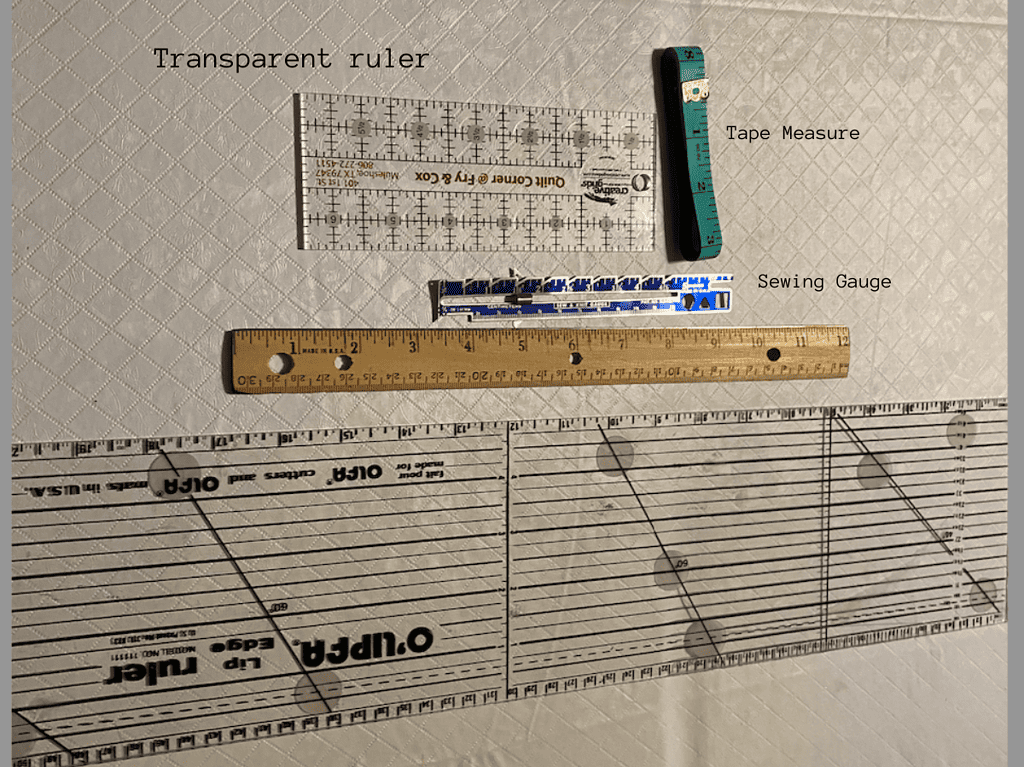
Pins Clips, and Needles
Pins, Clips and needles are the unsung heroes of sewing, holding fabric pieces together during the stitching process.
Glass head pins which are straight pins are commonly used for general sewing, while ballpoint pins are ideal for knits and delicate fabrics.
Sewing machine Needles come in various sizes and types, including universal needles, ballpoint needles, and sharp needles, each designed for specific fabrics and sewing techniques.
You will also want a pin cushion to hold your sewing pins. I like having a magnetic one so that I can get the sewing pin close while sewing, and it gets on the pin cushion.

Safety pins
Always have a few safety pins. In our drawstring backpack, you will find instructions using a safety pin to pull through the cording in the casing.
Seam Ripper
Even the most skilled sewists make mistakes, which is where the trusty seam ripper comes to the rescue. Seam rippers carefully undo stitches without damaging the fabric, allowing for corrections and alterations.
A seam ripper with a sharp blade and a comfortable handle is a must-have tool for any sewing project.
Sewing Gauge
When measuring seam allowances, you can use a seam gauge to get an accurate hem. It comes in handy and is easier to use than a measuring tape that moves around while you mark.
Needle Threaders
If you struggle to thread your needle and don’t have an automatic needle threader, a needle threader is a great tool to help you thread your sewing machine needle or hand-sewing needles quickly.
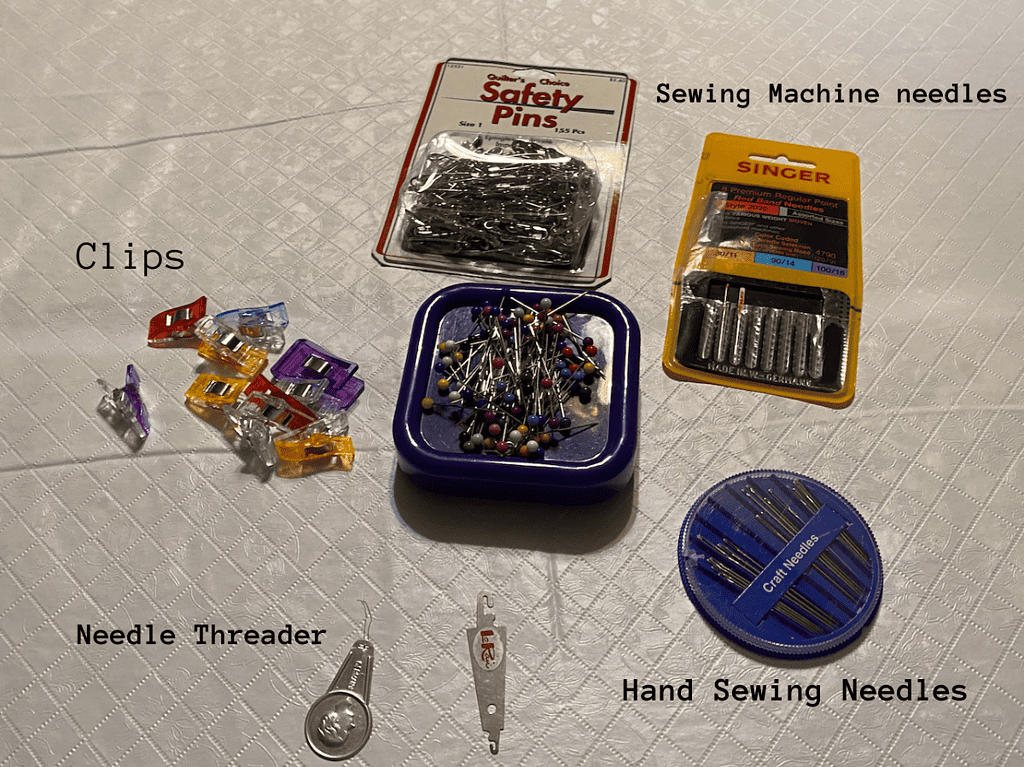
Fabric
You don’t need to buy a ton of different materials. Decide on your first few projects and find a few different colors of fabric.
Fabric is one of your basic sewing supplies. You might also ask family members if they have extra fabric or in a local Facebook group. Many people have a fabric stash they won’t ever use.
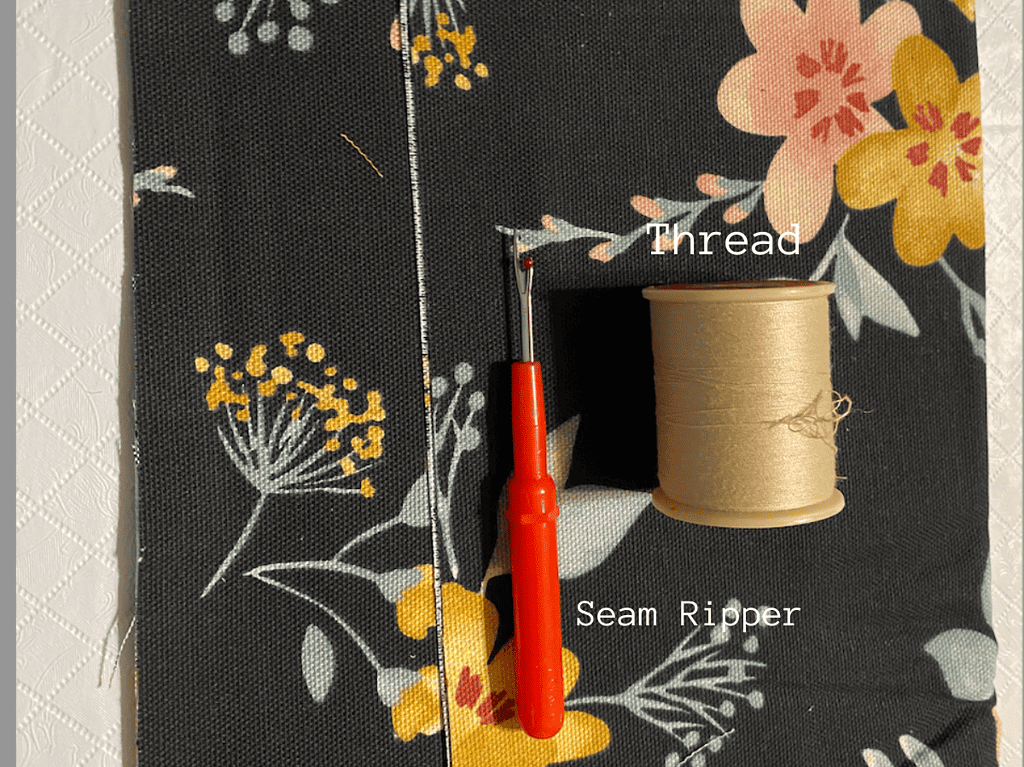
Thread
Depending on your sewing project you will want various threads. You want white thread for most projects but if you are doing our potholder tutorials you will want cotton threads because they don’t burn when heat is applied.
Notions and Accessories
Buttons and Fasteners
Buttons and fasteners are essential for securing garments and adding decorative elements. From traditional buttons to snap fasteners, hooks and eyes, and Velcro, there are numerous options to choose from. Consider the fabric type, garment style, and functionality when selecting the right type of fastening for your sewing project.
Zippers
Zippers are ubiquitous in garments, bags, and accessories. They come in various lengths, styles, and materials, including metal, plastic, and nylon coil.
Understanding how to install zippers correctly and choosing the appropriate zipper type for your project ensures smooth and functional closures.
Elastic and Trims
Elastic and trims add shape, structure, and decorative flair to garments. Elastic bands, ribbons, lace, and piping are popular choices for waistbands, cuffs, hems, and embellishments.
They provide comfort, flexibility, and personalized touches to your creations.
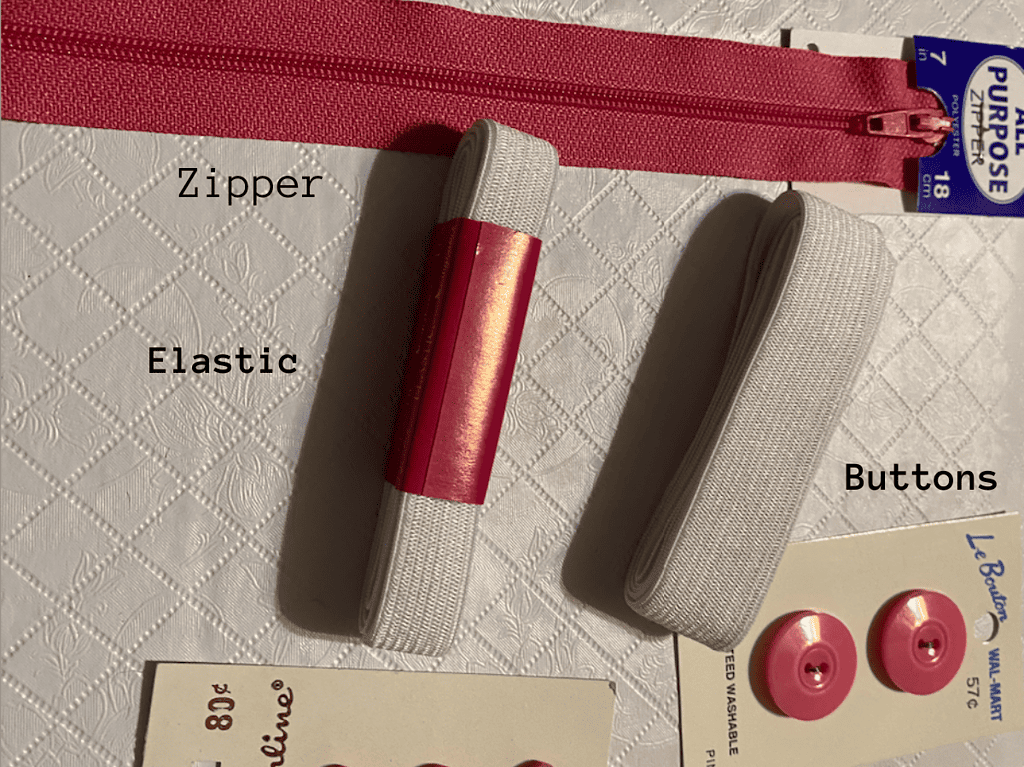
Interfacing and Stabilizers
Interfacing and stabilizers are used to add structure, support, and reinforcement to certain areas of a garment. Fusible and sew-in interfacing materials come in different weights and textures, ensuring compatibility with various fabric types.
Stabilizers are especially useful when working with delicate or stretchy fabrics, as they prevent distortion and provide stability during sewing.
Bias Tape and Binding
Bias tape and binding are versatile notions used to finish raw edges, create neat hems, and add decorative touches.
They come in different widths, colors, and materials, allowing for customization and creativity in your sewing projects.
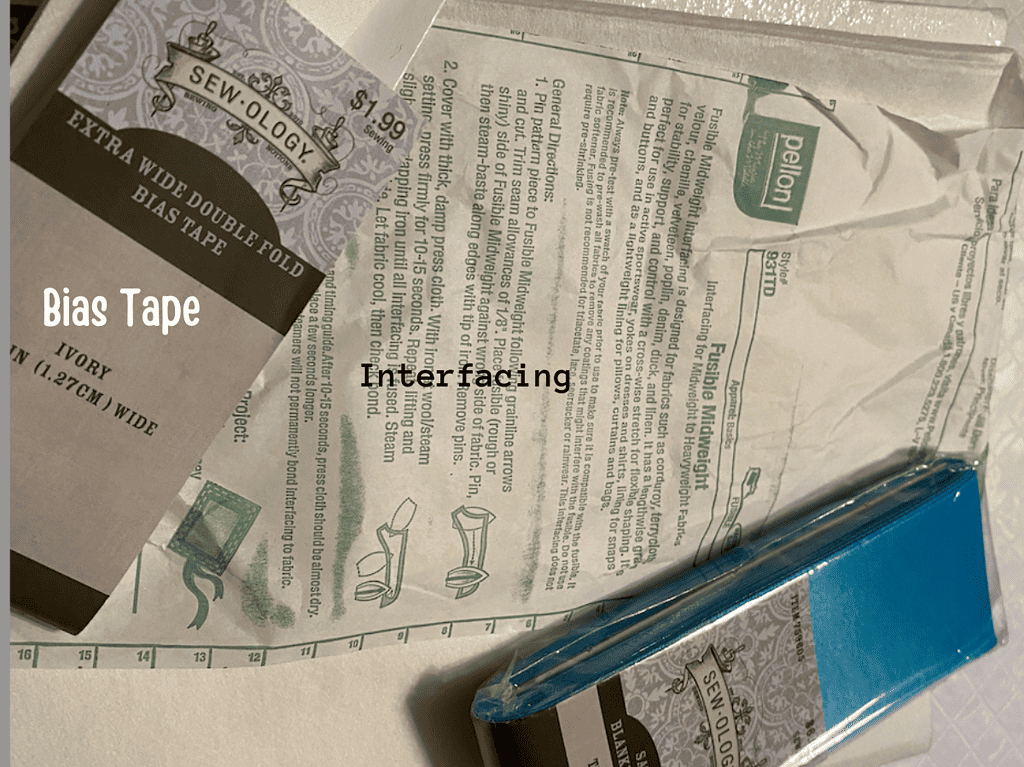
Sewing Patterns
Commercial Patterns
Commercial sewing patterns are widely available and provide a starting point for creating garments, accessories, and home decor items.
They come in different sizes, styles, and levels of difficulty, with detailed instructions and cutting layouts. Choose patterns that suit your skill level and desired design aesthetic.
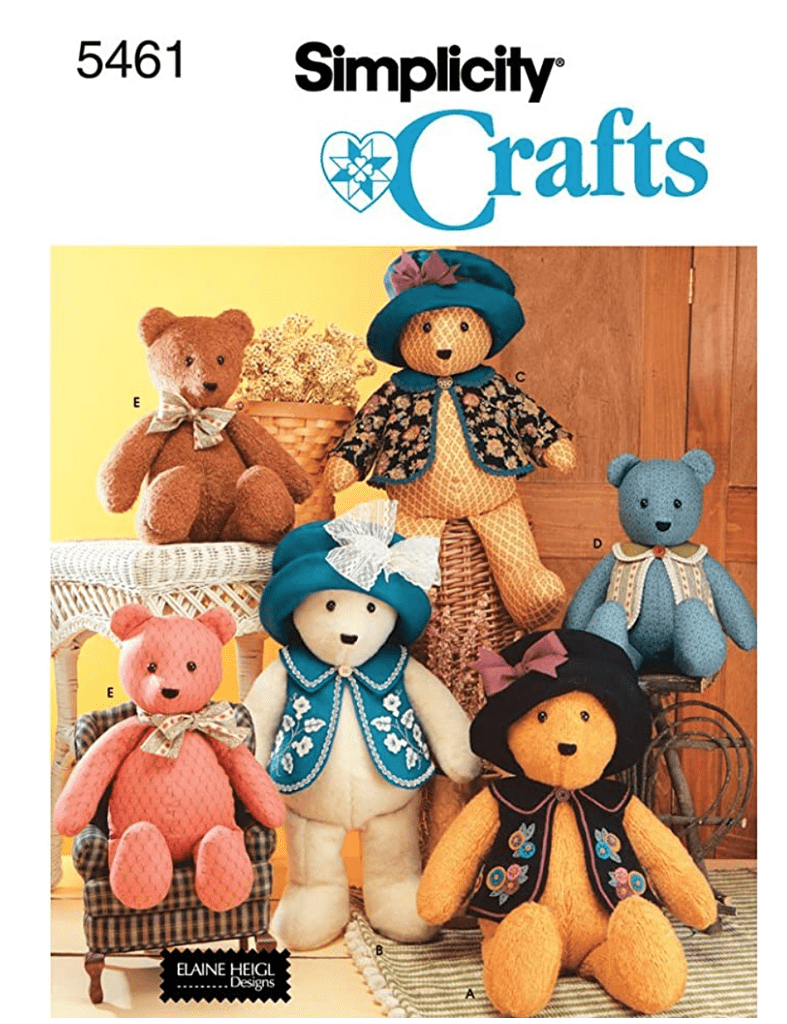
PDF Patterns
PDF patterns have gained popularity in recent years due to their accessibility and instant availability. They are digital files that can be downloaded, printed, and assembled at home.
PDF patterns often offer a wide range of sizes and variations, allowing for customization and ease of use.
You have full access to our PDF Pattern pieces when you sign up for our Sewing classes.
Cutting and Marking Tools
Cutting Mats and Rotary Cutters
When precision cutting is required, cutting mats and rotary cutters are invaluable tools. Cutting mats provide a smooth and protective surface, while rotary cutters offer sharp, circular blades that effortlessly cut through multiple layers of fabric.
These tools are particularly useful when working with quilting projects or intricate pattern pieces.
Pattern Weights
Pattern weights are handy tools used to hold paper or fabric patterns in place while cutting. They eliminate the need for pins, prevent shifting, and ensure accurate and clean cuts.
Pattern weights come in various shapes, sizes, and materials, including metal, plastic, and even repurposed objects like washers or small weights.
Marking Pens and Chalk
Marking pens and chalk pencil are essential for transferring pattern markings onto fabric. They come in different forms, including water-soluble pens, disappearing ink fabric marking pens, tailor’s chalk, and dressmaker’s carbon paper.
Choose marking tools that are suitable for your fabric type and will not leave permanent marks.
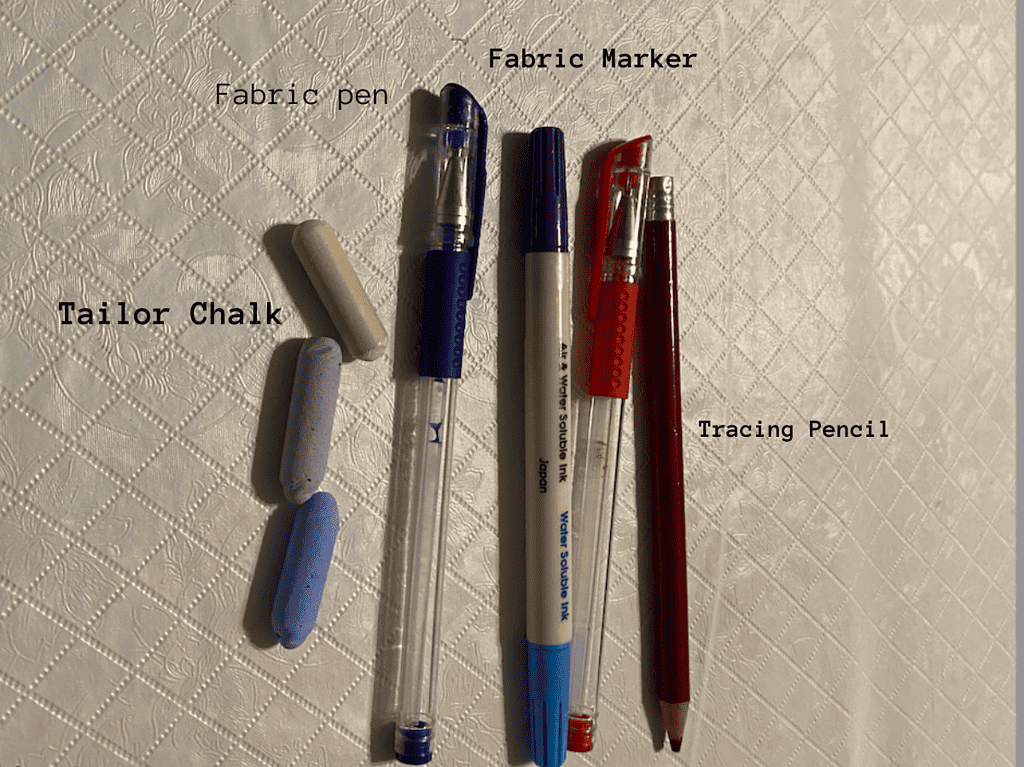
Ironing and Pressing Tools
Irons and Steamers
Irons and steamers are essential for achieving crisp and professional-looking seams. A steam iron removes wrinkles, sets fabric creases, and facilitates the application of interfacing and fusible materials.
Invest in a high-quality iron with adjustable temperature settings, and consider a garment steamer for delicate fabrics or large projects.

Ironing Boards and Pressing Tools
A sturdy ironing board is a sewing room staple. It provides a smooth and heat-resistant surface for ironing fabric and pressing seams.
Additionally, pressing tools like a tailor’s ham or a sleeve roll help shape and press curved or narrow areas, ensuring a clean and tailored finish. For small areas I love this ironing board.
Storage and Organization
Sewing Boxes and Baskets
Keeping your sewing supplies organized is essential for a functional and efficient sewing space. Sewing boxes and baskets offer storage solutions for smaller tools like needles, pins, and measuring tapes.
Look for boxes or fabric baskets with compartments or removable trays to keep everything neat and accessible.
Thread Racks and Spool Holders
Thread racks or spool holders are practical additions to your sewing area, keeping your threads organized and easily visible. They come in various sizes and designs, from wall-mounted racks to tabletop stands.
Thread racks not only add visual appeal to your sewing space but also allow you to quickly find the perfect thread for your project.
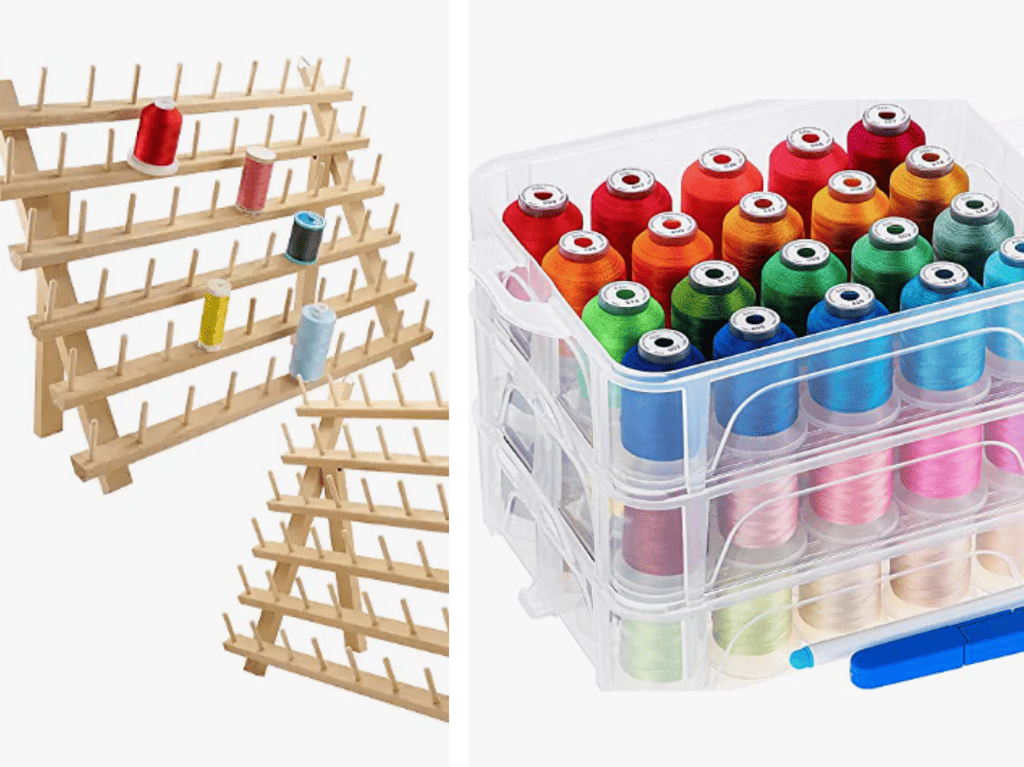
Bobbin Cases and Bobbin Organizers
Bobbin cases and organizers are essential for keeping your bobbins neatly stored and untangled. Bobbin cases come in different sizes and can hold multiple bobbins, while bobbin organizers offer compact storage solutions for smaller quantities.
These tools ensure that you always have the right color thread readily available.
Download our sewing supplies list of the different sewing tools you need. It’s a great way to get create a basic sewing kit for a sewing beginner. If you have questions, make sure and ask in our Facebook group.
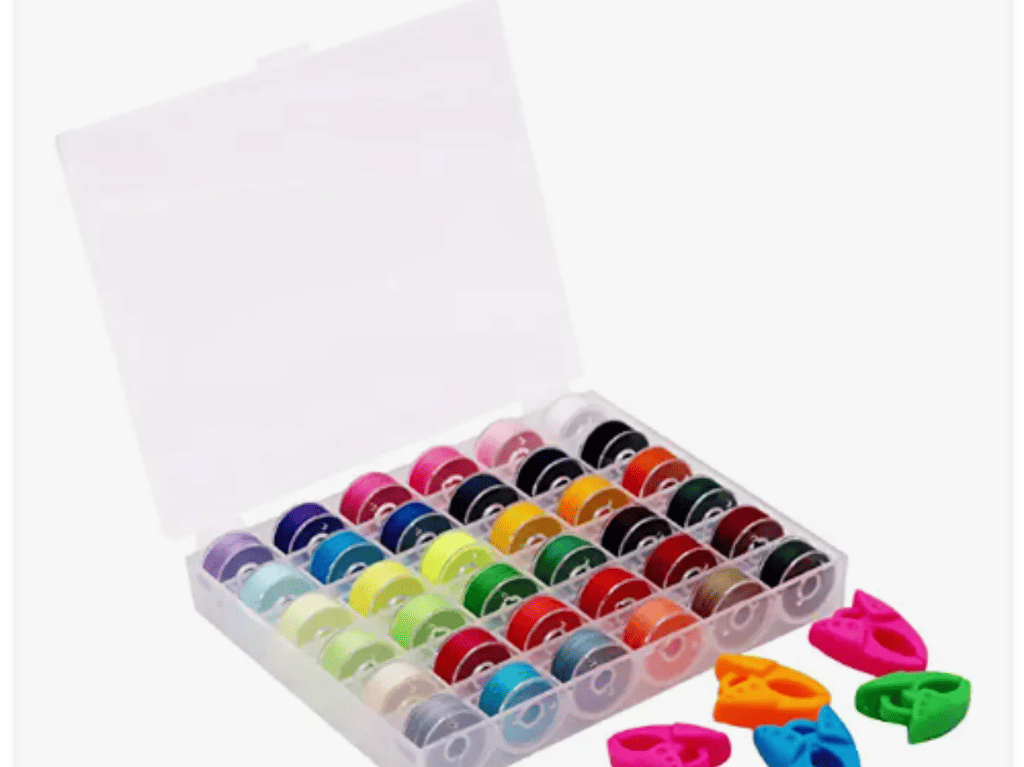
Other Sewing Resources:
If you are new to sewing, we recommend that you start by learning the basics and starting with a simple project like the potholder.
Start with:
Fabric Giveaway
Enter our monthly fabric giveaway. Simply complete the tasks daily and you will be entered into the drawing. Winner will be randomly drawn on the first day of the month and notified via email
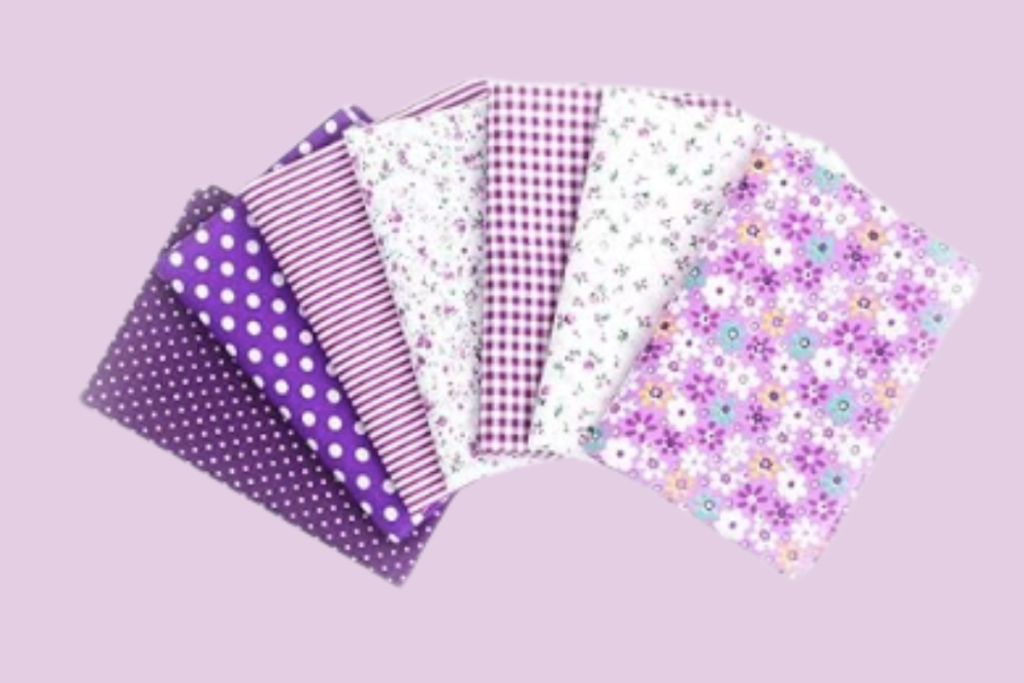

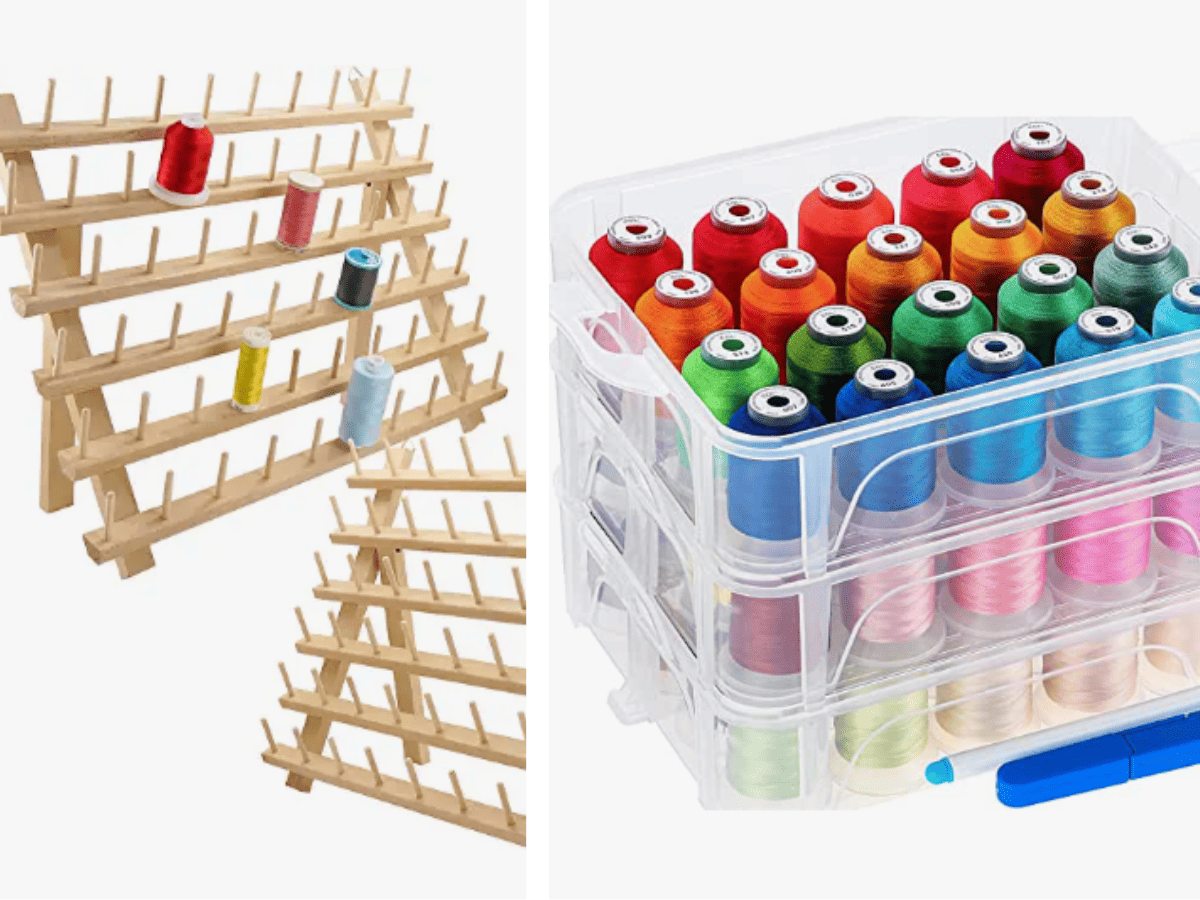
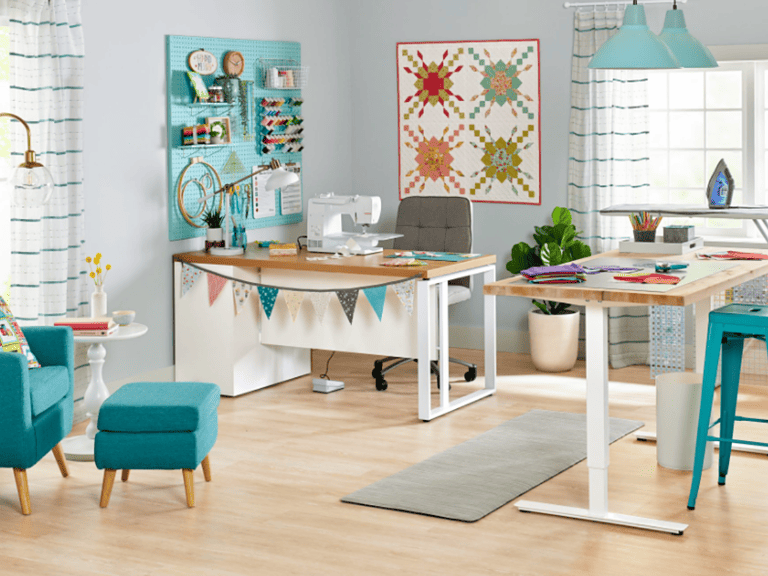
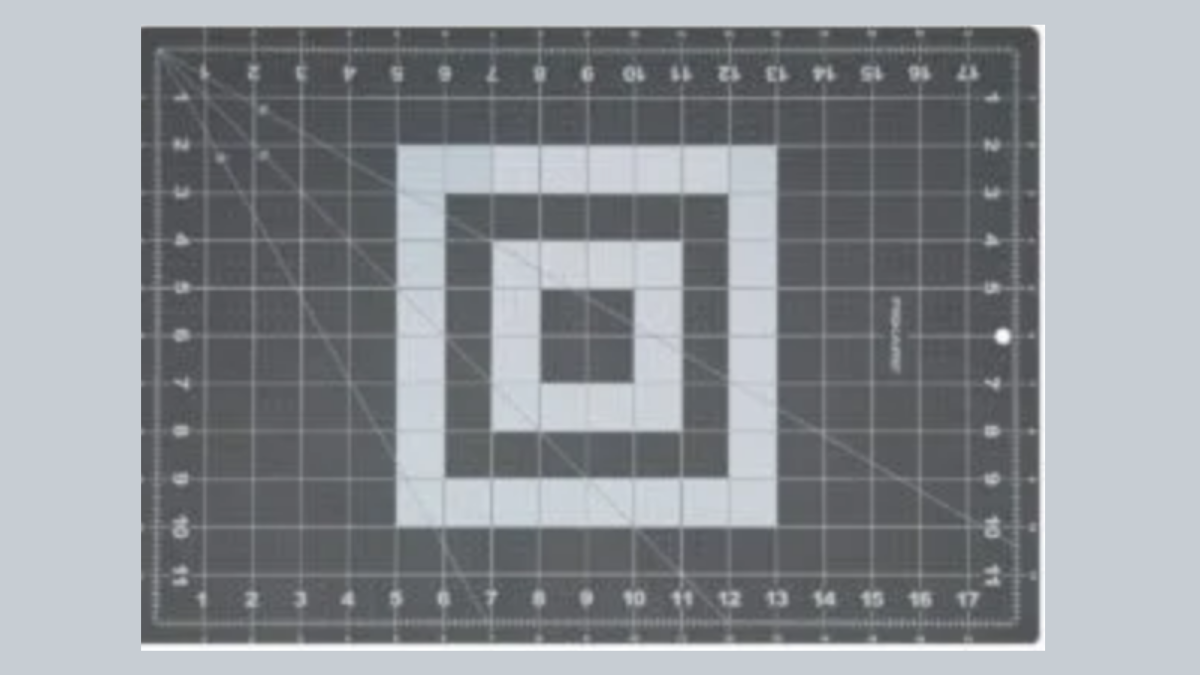
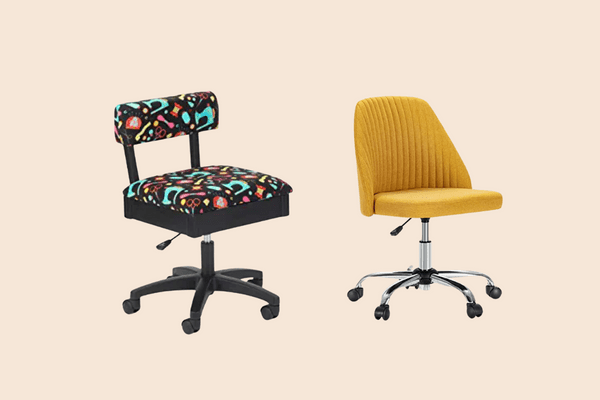
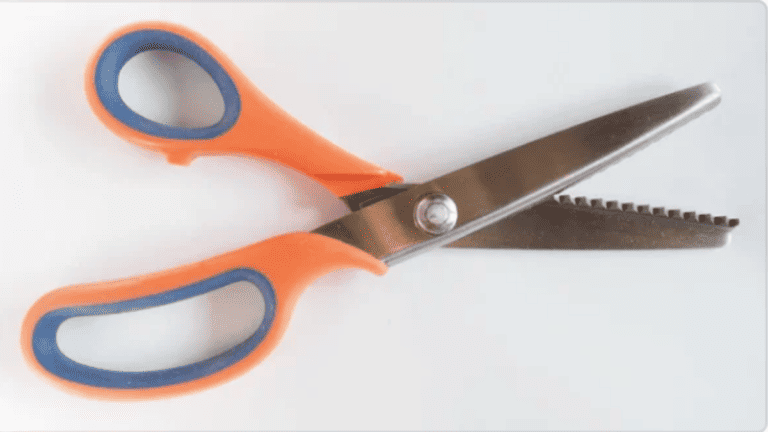

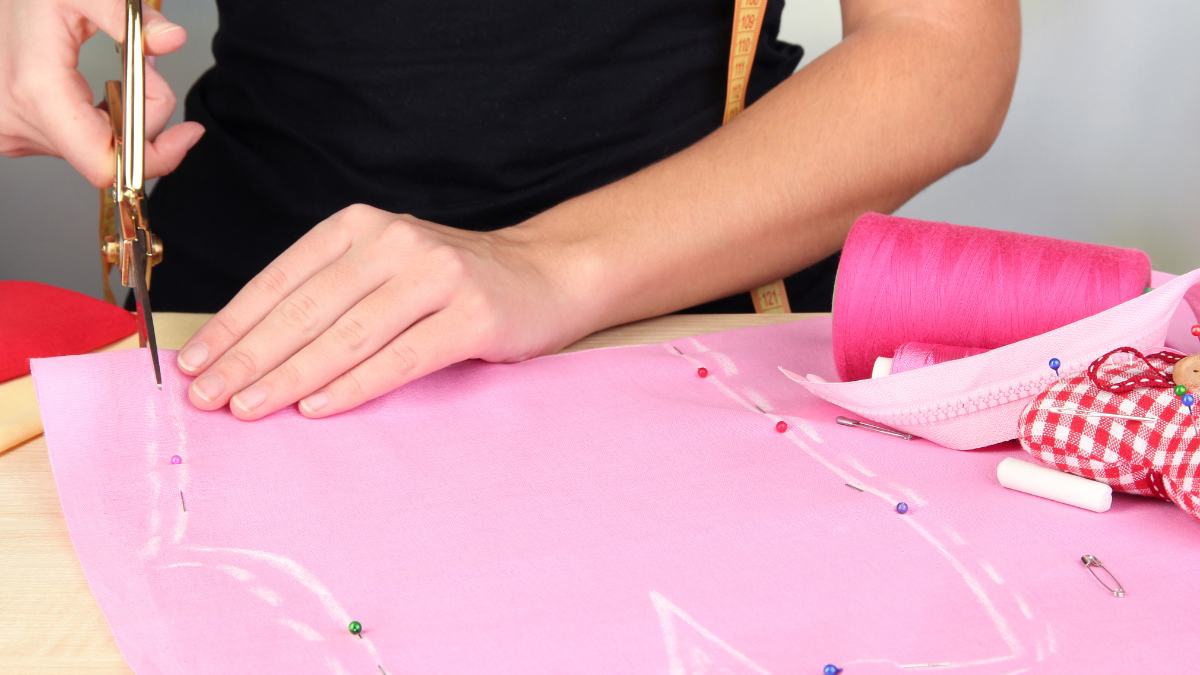
2 Comments